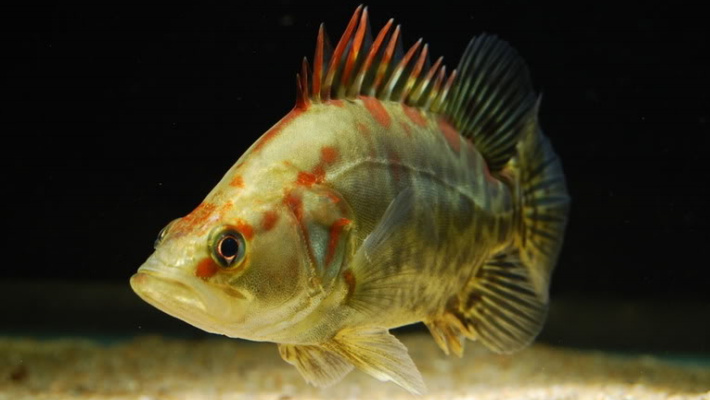|
Chemical
analyses of 21 species of dried aquatic plants
indicate that they contain the sufficient quantities of nutrients to be
considered as livestock feedstuffs (Linn et al., 1975). Although considerable
variations are among 21 species, 14 species contain more than 10% protein and all
species contain less than 30% crude fiber. Mixed aquatic plant species (approximately 50% Myriopbyllus, 30% Ceratopbyllum, 10% Potamogeton, 5% Vallisneria
and 5% unknown) have been ensiled with the organic acids (acetic, formic, propionic),
corn or alfalfa. After 47 days of fermentation the silages have had pH values
above 4.5 and lactic acid values below 0.4% of the dry matter. Acoording to
Linn et al. (1975), acid-treated aquatic plant and alfalfa silages are higher in crude protein, indicating
that acid additions decrease protein loss during fermentation.
To facilitate fish cultivation in
rural areas of the Neotropics, the potential of cosmopolitan and locally
available aquatic macrophytes from northern Colombia (Lemna minor, Spirodela
polyrhiza, Azolla filiculoides
and Eichhornia crassipes) as
alternative fish feed are studied by Cruz et al. (2011). Considering the importance
of fermentation in improving nutritional value of non-conventional feeds, fermentation
properties and effects of anaerobic fermentation on the nutritional quality of
the selected aquatic plants are evaluated. Although the fermentability
coefficients (FC) of the selected aquatic macrophytes reveal hardly fermentable
materials (FC < 35), the use of bacteria inoculants (Lactobacillus plantarum) and molasses (150 g kg-1)
results in good silage quality. Lactic acid fermentation positively affects the
nutritional quality of the selected plants, reducing the concentration of some
antinutritional substances (trypsin inhibitor, phytates, tannins and more) and
crude fibre content.
According to Cruz et al. (2011), an amino acid
profile of the raw macrophytes is sufficient to amino acid requirements of
tropical fish Nile tilapia (Oreochromis
niloticus) and pacu (Piaractus mesopotamicus). The amino acid
profile is similar in the raw plants and represented by 5,30 to 6,28 g per 100 g
protein in lysine and 1,72 to 2,04 g per 100 g protein in methionine. In
addition, the tested aquatic macrophytes show to be rich in aspartic acid and
glutamic acid. However, the effects of lactic acid fermentation on the protein
content are conditional and strongly depend on the plant species. According to
Cruz et al. (2011), the crude protein in fermented Azolla and Eichhornia
decreases (due to slower acidification), but increases in fermented Lemna
and Spirodela (maybe
through an additional microbial synthesis).
Aquatic
macrophytes such as Elodea nuttalli, Vallisneria natans, Alterranthera philoxerides that are widely distributed in water
environments have been used as substrate of solid-state fermentation to produce
crude protein extraction (Xiao et al., 2009). The experimental results show
that the crude protein content of products with mixed strains fermentation is
higher than that with single-strain fermentation. The crude protein content in V. natans fermented with the mold
strain, Aspergillus niger, and yeast, Candida utilis, (taken in the ratio 1:1at 28o C for 72 hours) is highest
(39,88 %) among the fermented aquatic macrophytes examined in this study.
Among other
inoculants to ferment aquatic and terrestrial plants, fish intestinal bacteria
are widely used (e.g., Bairagi et al., 2004; Saha & Ray, 2011).
Molasses fermented, cow rumen content fermented and
yeast fermented water hyacinth (E.
crassipes) have been incorporated
into isonitrogenous and isocaloric test diets for fingerlings of Nile tilapia, O. niloticus, by El-Sayed Abdel-Fattah
(2003). In final sum, diets with molasses fermented water hyacinth have been
utilized more efficiently than diets with yeast fermented and cow rumen content
fermented water hyacinth, respectively. According to
Tham et al. (2013), addition of molasses and rice bran as an absorbent,
but not an inoculant in the form of fermented vegetable juice (Brassica campestris), improve the quality
of fermented water gyacinth as food.
Basic References
Bairagi
A.., Sarkar Ghosh K., Sen S.K., Ray A.K. 2004. Evaluation
of nutritive value of Leucaena
leucocephala leaf meal inoculated with fish intestinal bacteria Bacillus subtilis and Bacillus circulans in formulated diets
for rohu, Labeo rohita (Hamilton)
fingerlings. Aquaculture Research, 35, 436-446.
Cruz Y., Kijora C., Wedler E., Danier J., Schulz C.
2011. Fermentation properties and nutritional quality of selected aquatic
macrophytes as alternative fish feed in rural areas of the Neotropics. Livestock Research for Rural Development 23, article # 239
El-Sayed
Abdel-Fattah M. 2003. Effects of fermentation methods on the nutritive value of
water hyacinth for Nile tilapia Oreochromis niloticus (L.) fingerlings. Aquaculture 218: 471-478
Linn J.G.,
Staba E.J., Goodrich R.D., Meiske J.C., Otterby D.E. 1975. Nutritive value of dried or ensiled aquatic plants. I.
Chemical composition. Journal of Animal Science 41, 601-609
Saha
S., Ray A.K. 2011. Evaluation of nutritive value of water hyacinth (Eichhornia crassipes) leaf meal in
compound diets for rohu, Labeo rohita
(Hamilton,
1822) fingerlings after fermentation with two bacterial strains isolated from
fish gut. Turkish Journal of Fisheries
and Aquatic Sciences 11,
199-207
Tham H.T., Man N.V., Pauly T. 2013. Fermentation quality of ensiled water hyacinth
(Eichhornia crassipes) as affected by
additives. Asian-Australasian
Journal of Animal Sciences 26, 195-201
Xiao L., Yang L., Zhanga Y., Gua Y., Jianga L., Qinb B. 2009. Solid state fermentation of aquatic macrophytes for crude protein
extraction. Ecological Engeneering
35, 1668-1676
|








 SUBSCRIBE
SUBSCRIBE


